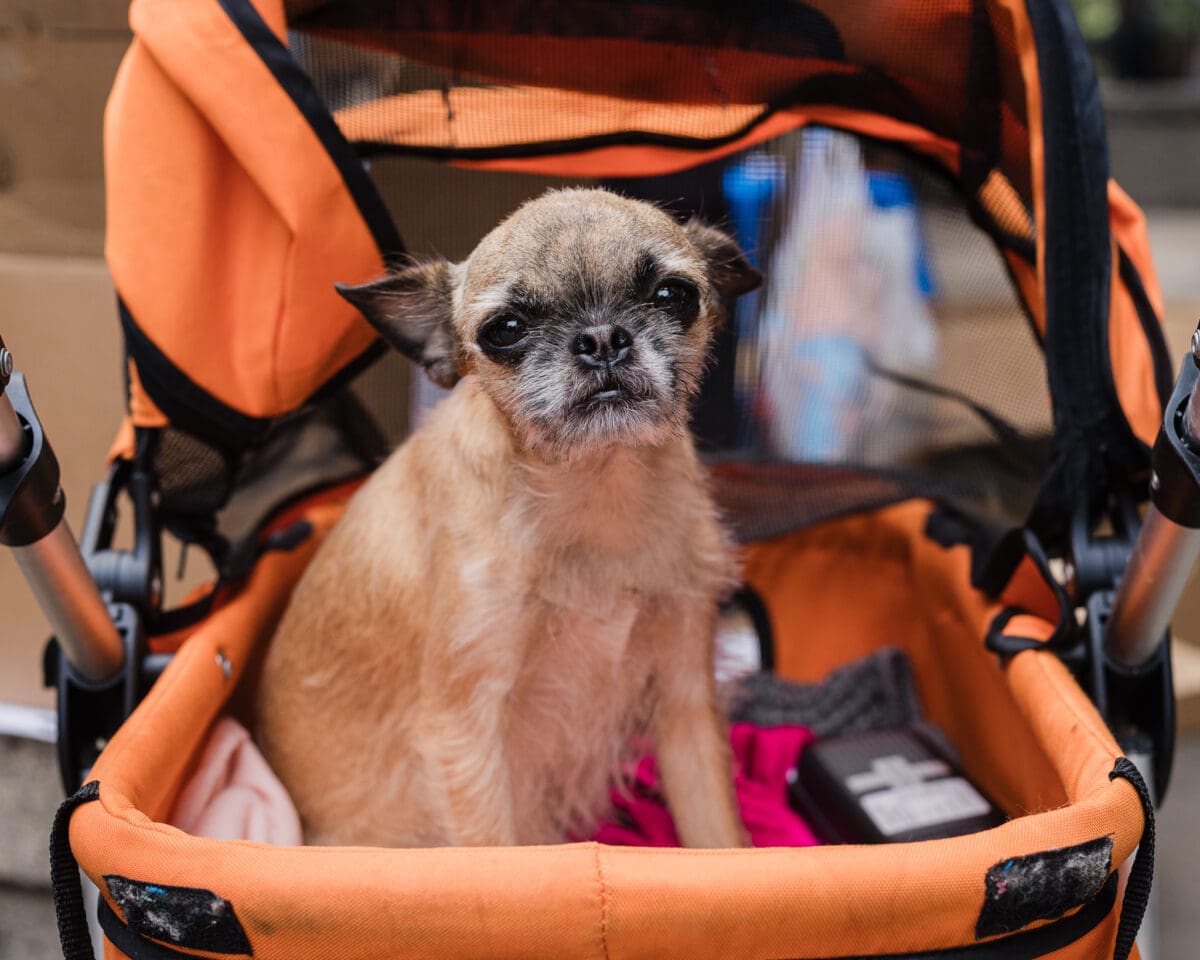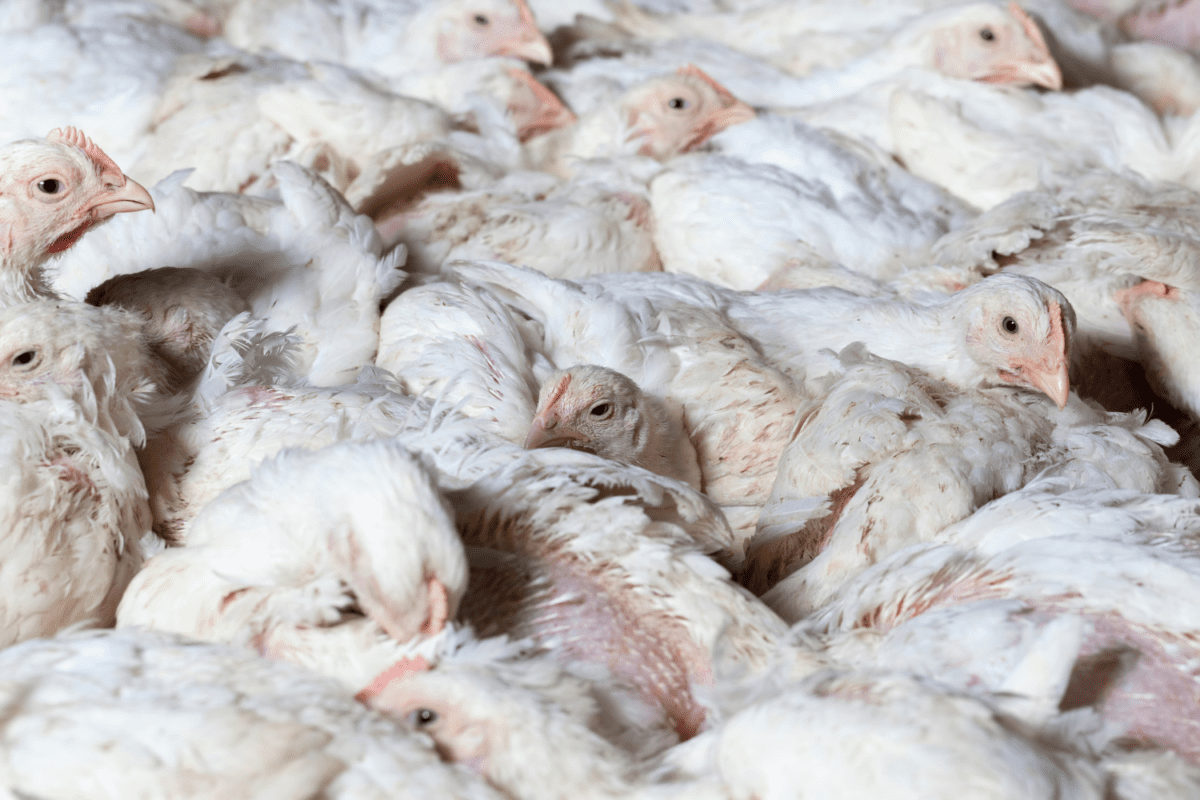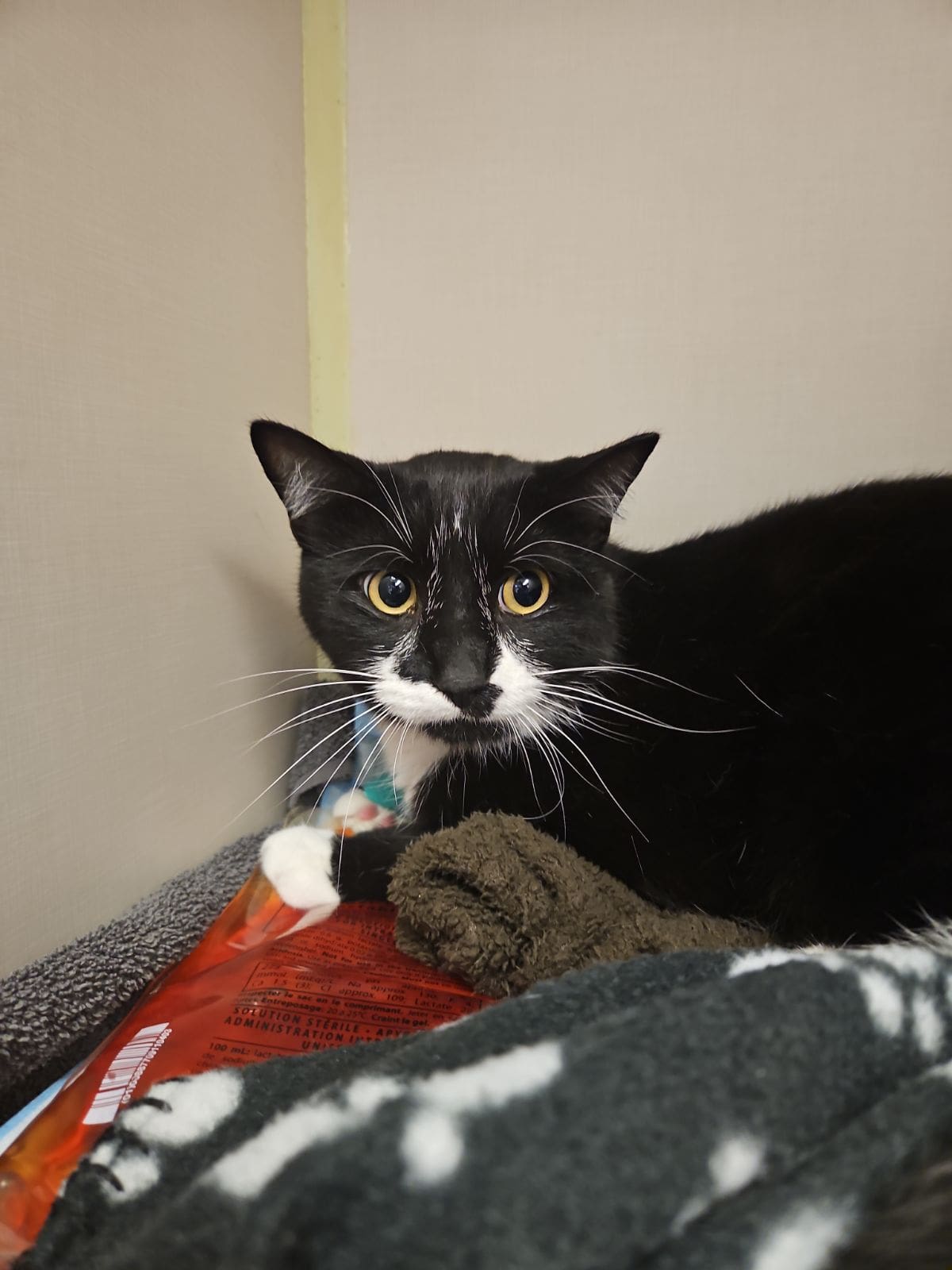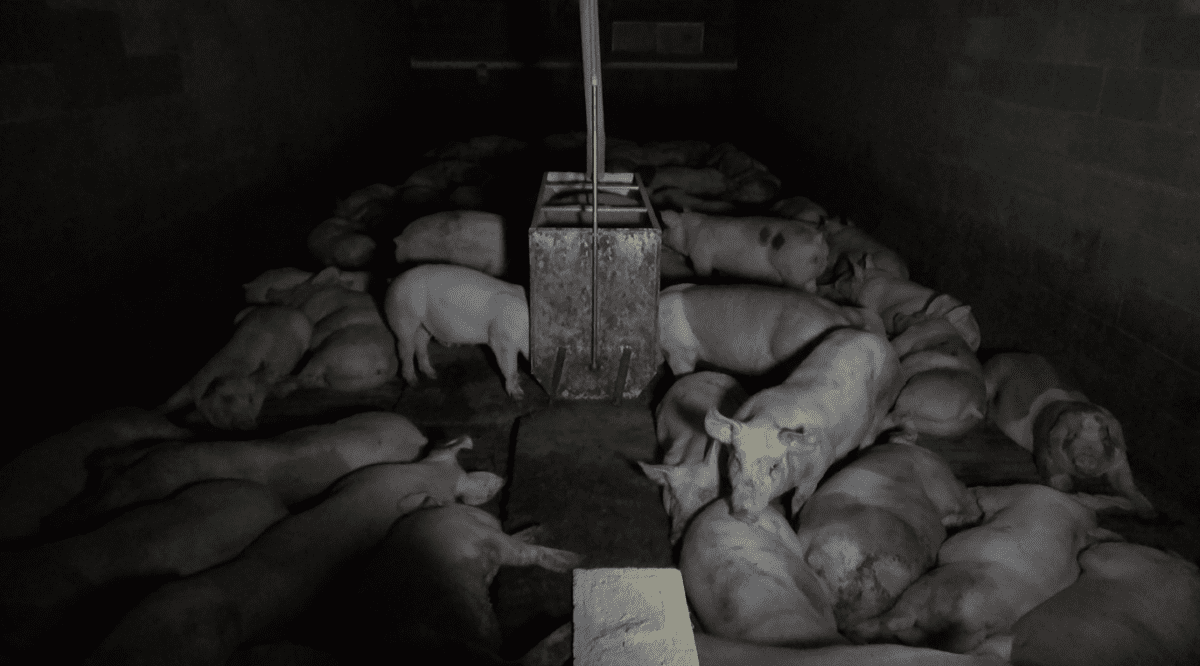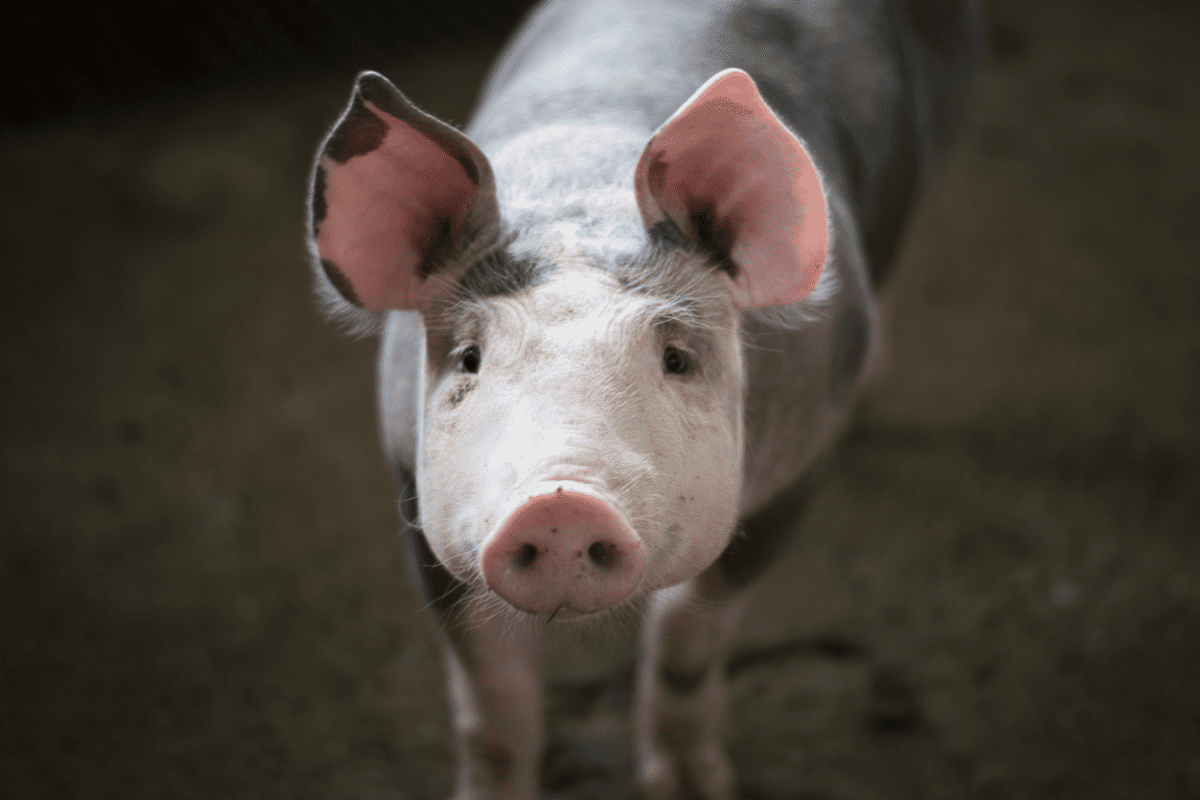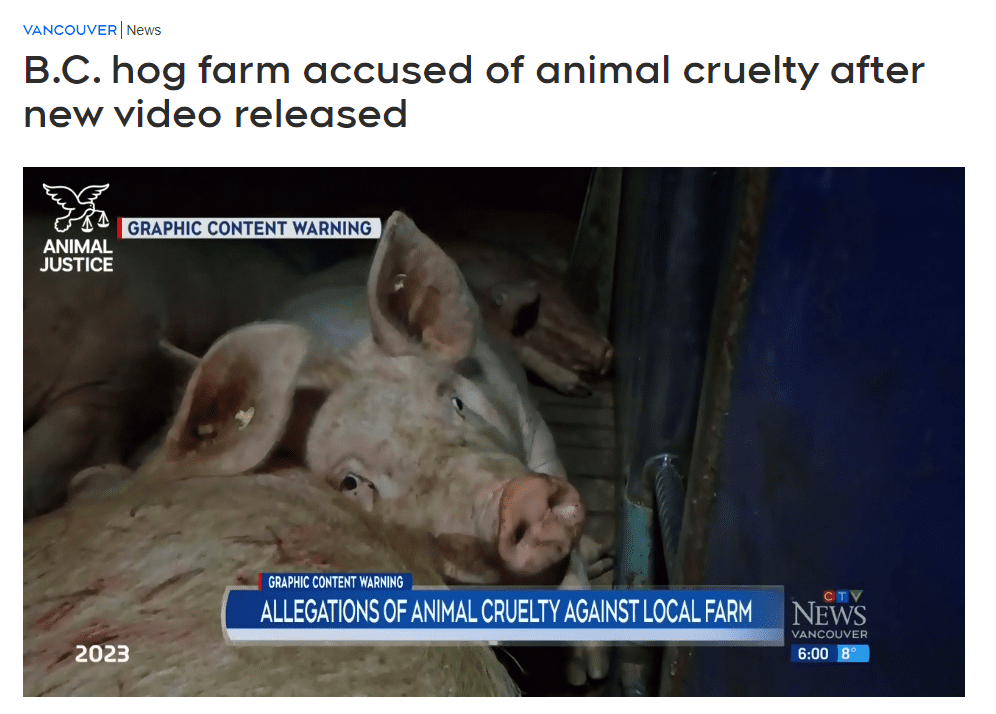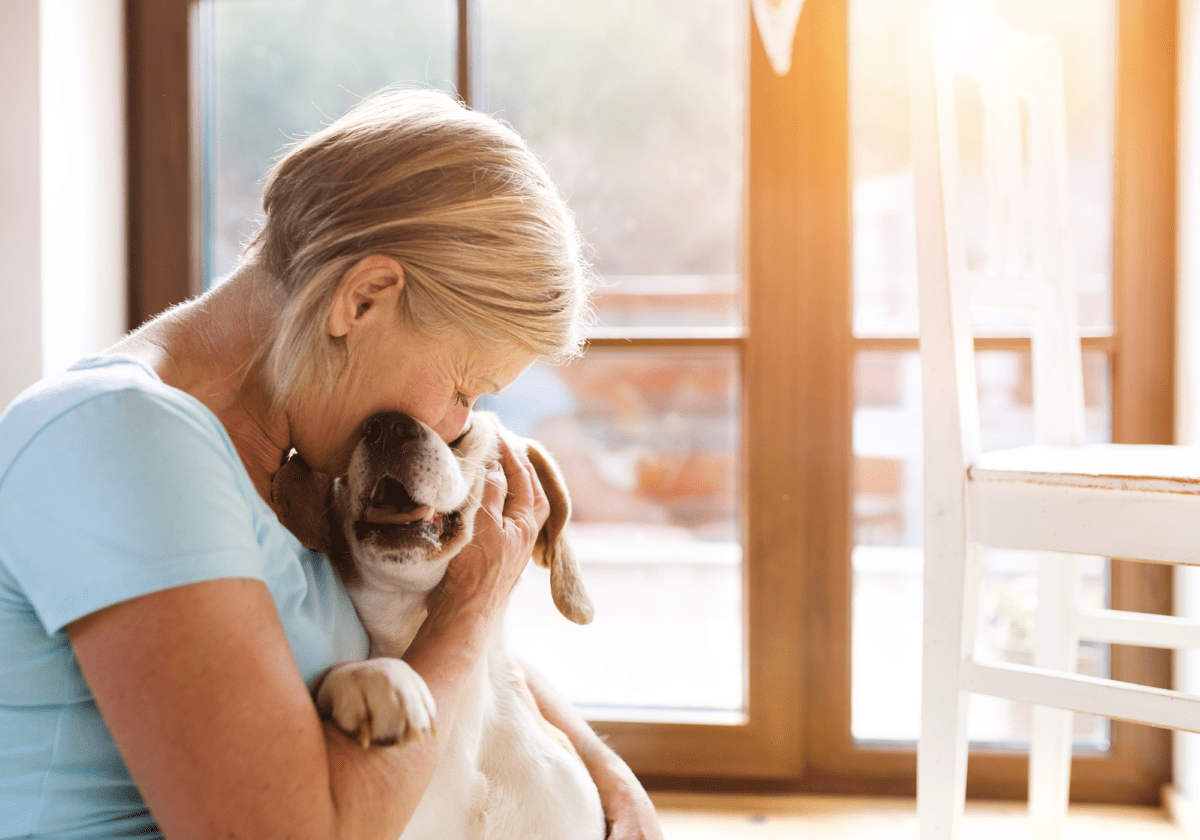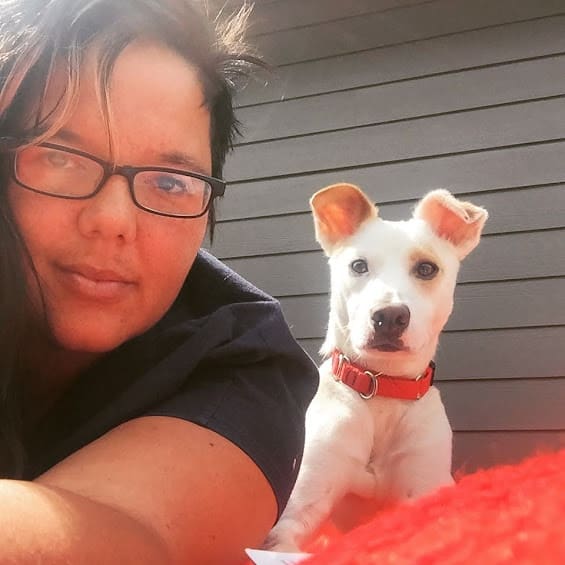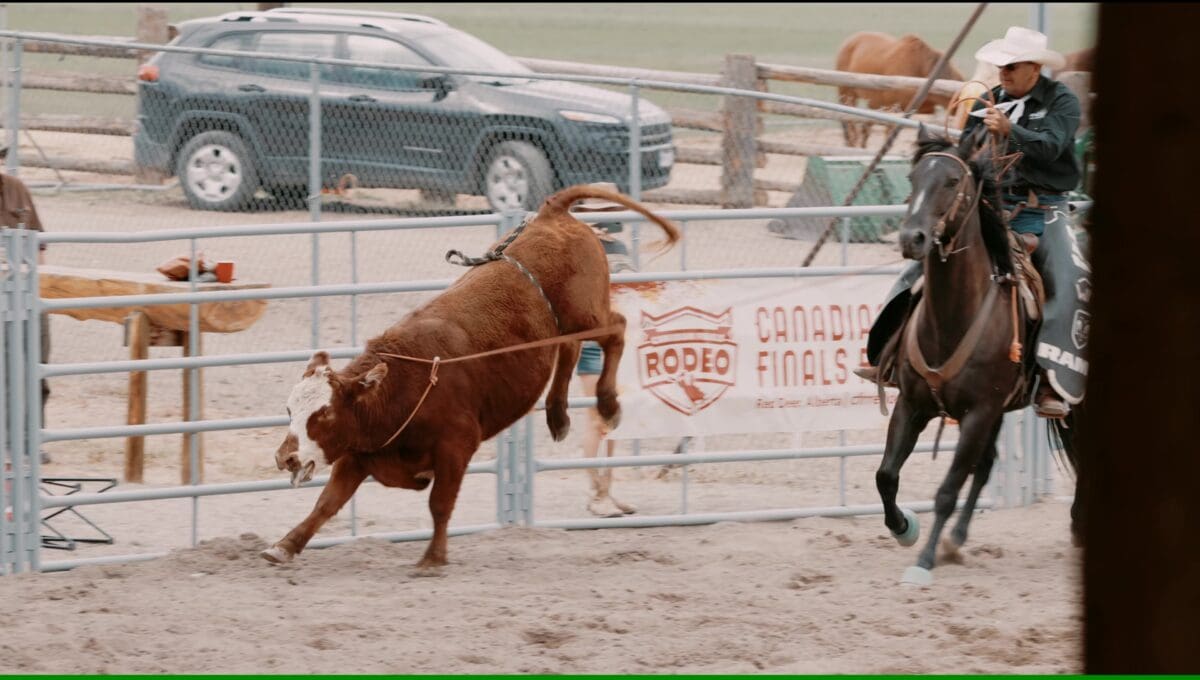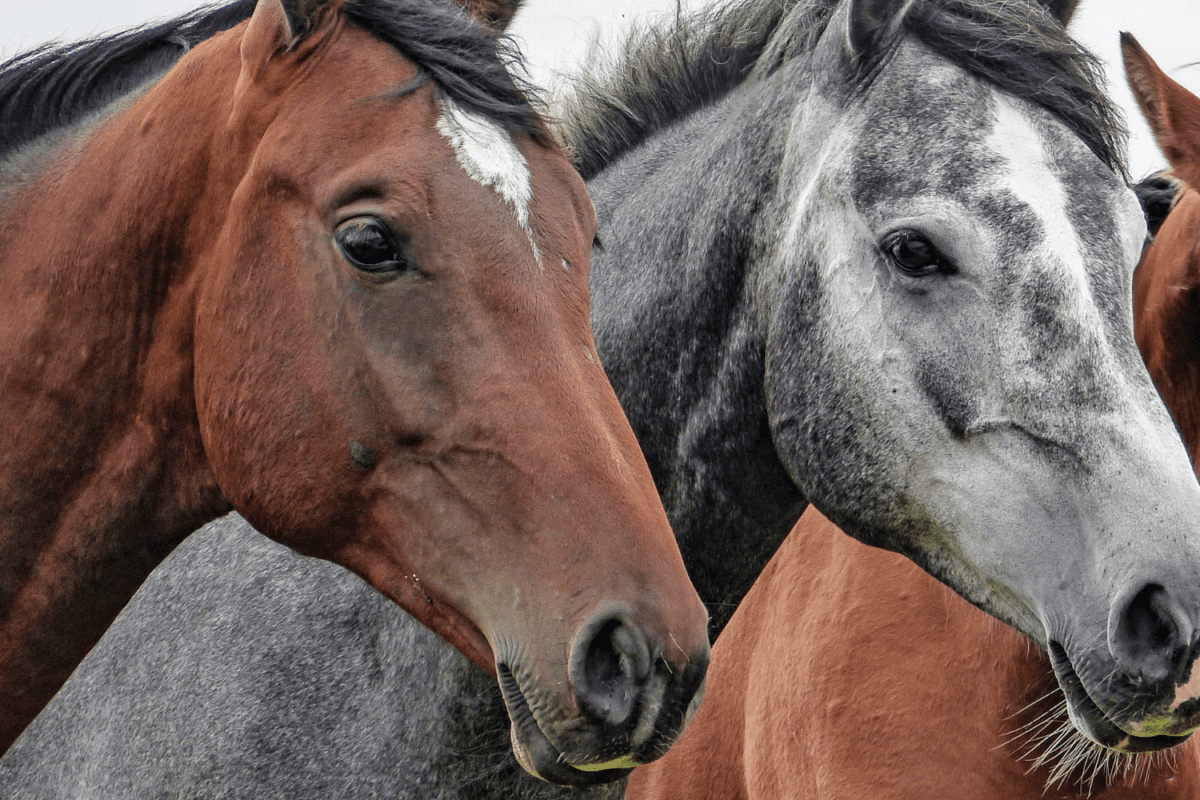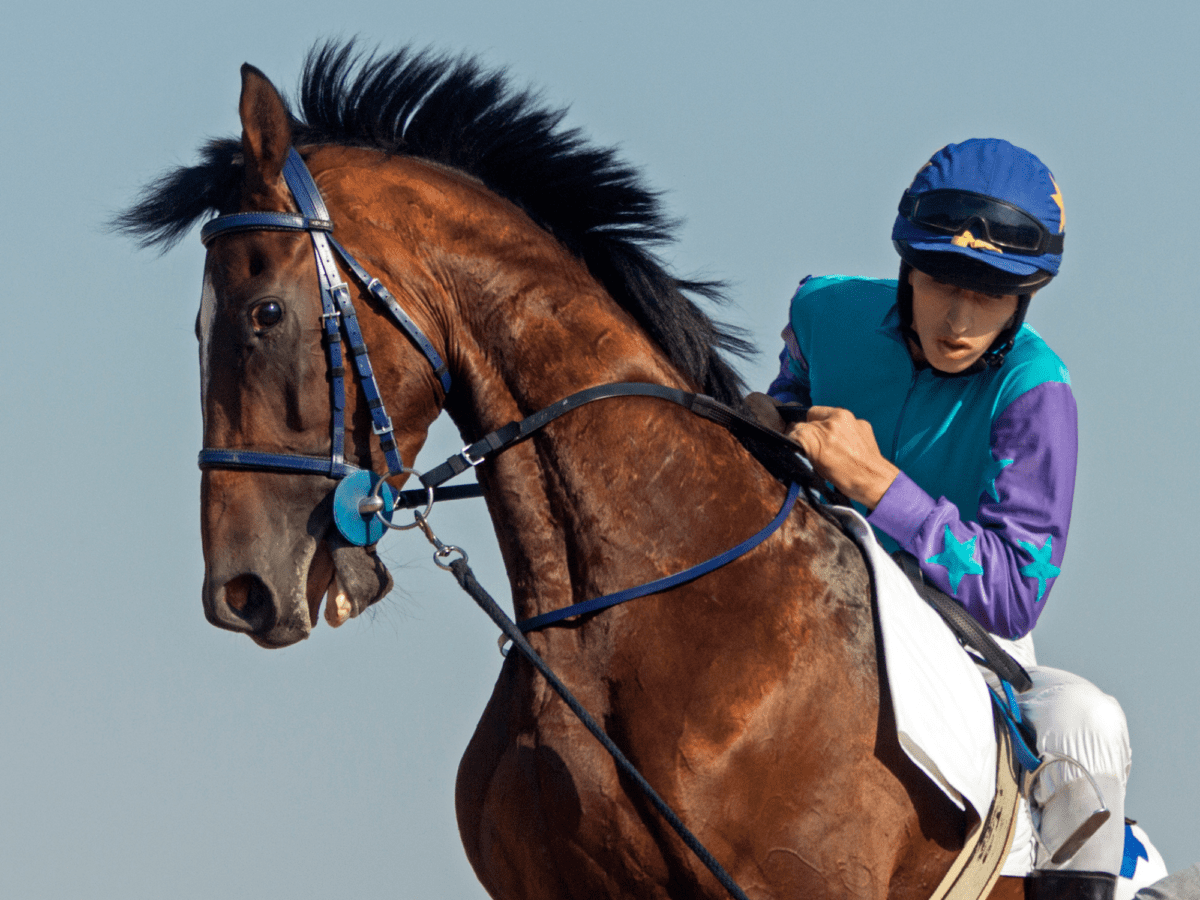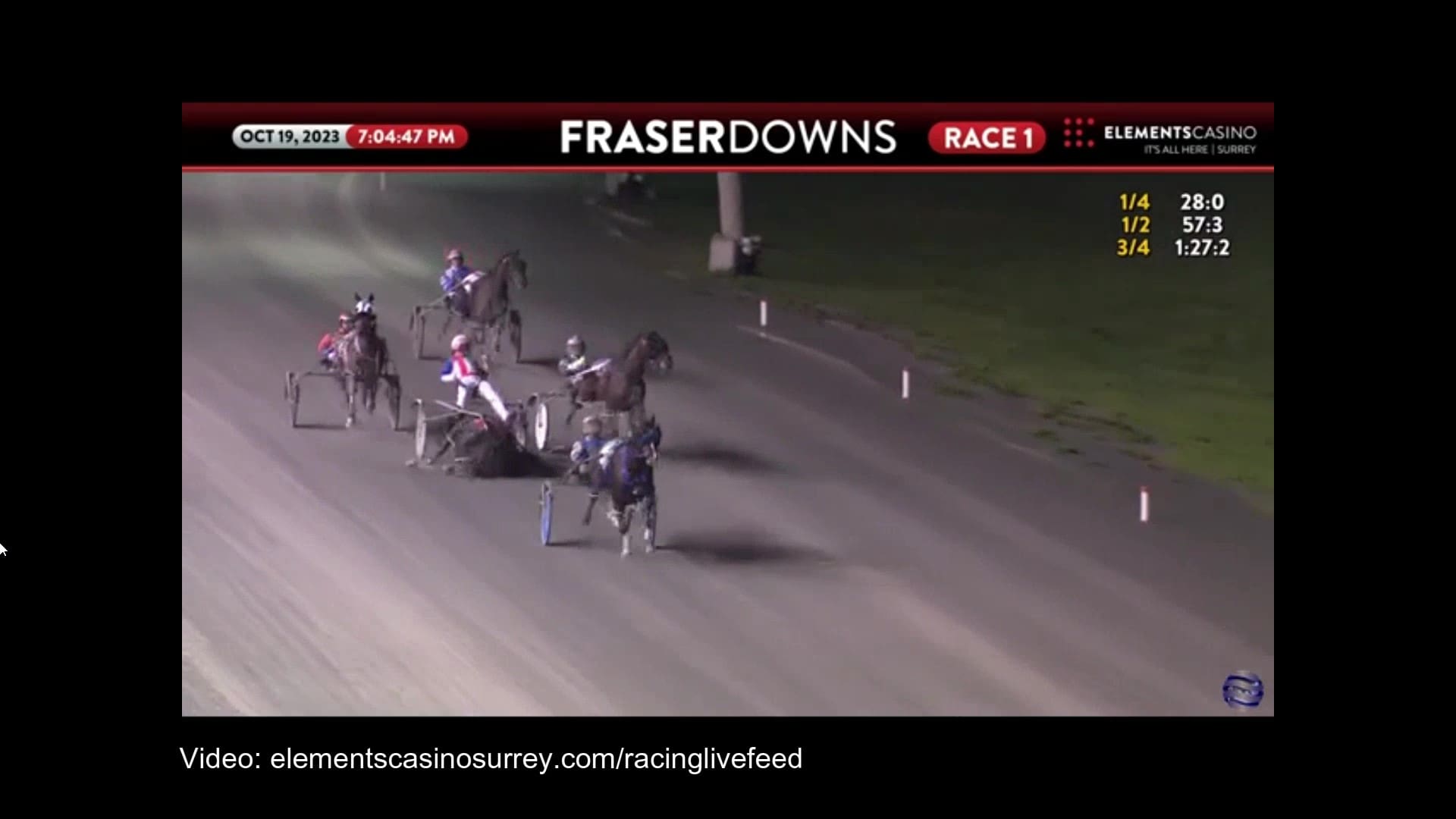People of all income levels love and care for their animal family members.
In this month’s episode of The Informed Animal Ally, the Vancouver Humane Society’s Amy Morris and Chantelle Archambault are joined by Brooklyn Fowler-Moros, the manager of companion animal programs to discuss the challenges low-income pet guardians face, and the systems in place to help them.
Note: This written discussion has been edited for length.
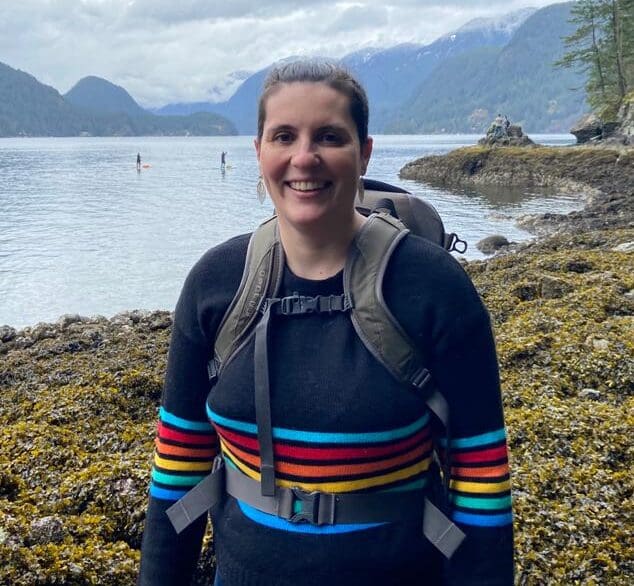
Featured Guest: Brooklyn Fowler-Moros
Program Manager, Companion Animal Programs
Brooklyn works as the manager of the VHS’s companion animal programs. Brooklyn holds a Master’s Degree in Gender, Sexuality, & Women’s Studies from Simon Fraser University specializing in feminist approaches to public policy. Working for justice for all animals, human and non-human is Brooklyn’s driving passion. They are also involved with a number of other local organizations working towards justice and inclusion for Queer and/or Trans people, sex workers, and folks living in poverty.
- Financial crises can impact many pet guardians
- Research on low-income pet guardianship
- Supporting guardians in need
- Who needs help?
- Experiences in the Downtown Eastside
- Mitigating compassion fatigue
- Concerns about animals living on the street
- Pets and young people
- Collaboration with other services
- How you can help
- Next episode
Financial crises can impact many pet guardians

Amy: I’d love to start this episode with a little story. I grew up with dogs in my life. Some of you might relate to this idea that they were there for me, even when my parents and friends and siblings were not. At my loneliest moments, my dog was by my side. When I left home at 18, there was a natural emptiness that came from not having a dog to spend my study time with and to give me healthy breaks in my day.
As many people do, I headed to the local SPCA and fell in love with a jailed little scruffy pup. Not long after, I was caring for him. I learned all about trauma and dog behaviour. A few years went by and I discovered that he had a medical condition, bladder crystals that could not be dissolved naturally.
A full-time student, I scrapped together the funds for one surgery, and then another a year later.
When I finished school, I had difficulty finding well-paying work. I was living right at the low-income poverty cut off level, where I could not get any government assistance, but was also just scraping by.
Then there was a freak accident at the dog park. After the emergency veterinarian, I had to go to a Canada West bone specialist for a $6,000 surgery. I went into debt, maxing out my credit card, worried about the future and paying my bills.
Luckily, I had a support network that I knew could help me, and credit card support. I came from a privileged upbringing and knew that if I really didn’t have the funds, my parents would likely help me. So, in the face of a deeply emotionally challenging situation, I had peace of mind that I could do what was best for my pup.
The people we assist at Vancouver Humane Society have the same feelings as me. Their pet is their mental health lifeline, keeping them feeling connected and sane; healing from trauma and feeling less alone. They live below the poverty cut off level; often having just enough money to have some kind of housing, feed themselves and their pet.
The big difference, though, is that when their pet is in crisis, they don’t have the same support networks. They might have no access to credit, and no friends or family that can offer support.
I think people often think that people in that kind of situation got there through some kind of ‘fault’ or ‘decision’ that they made, but the reality is that the majority of people in this situation started off with far less resources than I did, and certainly through no fault of their own. They might have been taken from their families and put into foster care as a child, or had a long medical illness that drained their finances. Everyone’s story is different about how they got to where they were, but the universal reality is the love and connection they have with their pets.
Research on low-income pet guardianship

Chantelle: In December of 2020, the Vancouver Humane Society released a report on addressing animal neglect through the provision of veterinary outreach services.
Even the language ‘animal neglect’ we used is problematic, because it implies a fault, a ‘failure to care’ for an animal ‘properly’. While this title language was used to make the paper more accessible and more likely to be read within the animal welfare sector, it doesn’t convey the reality of a legacy of intergenerational trauma that perpetuates people not being able to get the care they need, let along the care their pet needs.
That said, the report highlights the importance of supporting structural vulnerable people with caring for their pets.
We know that animals offer companionship and have a mutual bond, they are part of the family.
Interestingly, in a qualitative study co-authored by the VHS, one of the participants noted that low-income people take in animals in need when no one else can because they have compassion for their situation. Speaking with people with pets in Vancouver’s Downtown Eastside at the VHS’s Because They Matter event I’ve heard stories like that, where people will take in animals from family or neighbours who can’t care for them anymore. As Amy mentioned, we also know that people’s circumstances can change when they already have a companion animal.
Supporting guardians in need

Chantelle: Brooklyn, what is it like to administer a program where everyone presents an urgent need for support?
Brooklyn: I would say, my first thought is it can be challenging. It can also be profoundly rewarding.
I think you’ve both done a really good job of highlighting a lot of the structural issues that I see on a daily basis from application to application.
You made an excellent point that every case is truly, genuinely so different from another, but the themes are consistently true.
The cases that I see most often can be described as there’s an acute emergency. The pet is dealing with something that is a life threatening emergency, which even just hearing the term life threatening can bring tension into the chest. It’s very stressful for any of us, even in the best of circumstances to imagine a loved one, a human family member, a pet family member, to be going through a life threatening state of distress.
So when someone’s contacting us, and when I’m speaking with them, they’re going through something that has them in a profoundly difficult headspace.
And you add to that some of these structural issues, where you’ve got someone who maybe has been living off of $80 since their last paycheck, which could be a week ago, it could be two, it could be three weeks ago, and they’ve been trying to stretch $80 to buy a bag of cat food, and also to get, you know, enough Mr. Noodles, or enough this, enough that, to just get through.
You’ve got people who I talk with who have had housing for most of their lives, and who, when they became a senior, got priced out. And they had one eviction and they can’t pay a thousand dollars more a month for rent. I’ve talked to seniors who have lost their housing in their elderly years.
These are the circumstances that these emergencies are popping up into.
So when I came into this role and I hear the words, you operate from a trauma-informed perspective, that’s really what I try to hold in my heart in every single one of these conversations; that yes, everyone I talk to is dealing with an acute emergency with their pet, but not everyone is dealing with it from the same starting point.
I might have the same emergency and have the same emotional reaction and the same mental health impacts from when my own cat has needed life saving surgery, but I had a credit card I could put it on, I had pet insurance I could lean on to get a lot of it covered, I had, like Amy said, friends, family, a support system I could lean on, so the starting point that I’m coming into this emergency with is so much more substantial than what a lot of these people are dealing with with.
They’ve lost family members, they’ve maybe lost kids, they’ve lost parents, they’ve lost loved ones, their own health is compromised. They’re, just trying to get through the day, the week, the month, the year.
So it can be challenging, absolutely, but as I started off saying, the level of reward is phenomenal when you get to talk to these folks and hear their commitment to their pet’s well-being. It genuinely brings tears to my eyes.
Sometimes when people say, I was addicted for X amount of years and when I came into contact with my dog, someone once said, he saved me. My dog saved me. We rescued each other.
It just blows my mind, the level of dedication that people have to their pets. The people who say, I’ve had that $80 to live off of for the last two or three weeks. And the first step was to buy that big bag of cat food. And the second step was to figure out how am I now going to stretch that last $35 to get through?
It’s just incredible to me.
Who needs help?

Chantelle: We’ve all spoken about how everyone’s situation is so different, but you’ve started to talk about some patterns that everyone loves and cares for their pets. I also imagine you must start to notice some other types of patterns when you’re dealing with people in a similar state of financial crisis. So are there any commonalities that tend to be similar amongst people who are accessing the program? Is there anything that makes every case truly unique?
Brooklyn: I mean, from a literal level, of course, they’re really every case is literally unique. It’s a different human being. It’s a different pet. It’s slightly, slightly different medical situation, or sometimes very different medical situations.
I try to keep that in mind as well, because in terms of approach, you know, there might be one person who wants to just have this conversation as fast as possible and get off the phone and go back to solving the problem themselves. And I completely appreciate that. I’ve felt that way many conversations in my life when I’m going through stress.
And there are some people who really need to talk and they might need referrals. They might be in an acute mental health crisis. Sometimes we find ourselves giving out crisis line phone numbers or resources for mental health support, a food bank, shelters.
Three groups make up the majority of program applications
Brooklyn: So those are the things that make each case different, but in terms of patterns, I would say the overwhelming majority of cases cite either:
- being a senior, or
- being someone with a disability or multiple disabilities, or
- being a single parent.
Many people will cite multiple of the above.
People face barriers to meeting their needs
Brooklyn: So these are folks who are often dealing with very substantial systemic barriers to the level of success that they’re perfectly capable of.
It’s hard for someone to make the kind of income that might be easily accessible or easily attainable for many people if you are able to get a master’s degree, if you had the financial and the structural support to go through something so difficult as that level of education.
It’s very challenging when you’re dealing with multiple disabilities and in a system where it’s very hard to get social supports for mental health disabilities, physical disabilities, mobility disabilities.
It’s very difficult to get the basic support that you need.
I hope that these are out of date criticisms, but I grew up hearing, get a job. Well, people often have jobs, and these jobs don’t pay enough to get by. They’re working very hard, sometimes 40 hours a week, sometimes 60, 80 hours a week. People are working to figure their budgets out, to raise their kids, to do the best that they can on an income that is not feasible to live or thrive on.
For people with multiple complex disabilities, it’s very difficult when it’s physically impossible or very close to impossible to get a lot of jobs that you could possibly make a good living off of.
It’s very hard when jobs aren’t set up a lot of the time for people with physical disabilities, mental health challenges, neurodiversity, things like that. I hope that most of us have retired the idea of, you know, get a job because like I said, people have one.
And for a lot of people, getting through today is a full time gig and it takes a lot of work.
Chantelle: We talk about the systemic overlap between animal welfare and social issues a lot.
I’m glad you mentioned the point about work because the reality is those jobs that are very low paying exist. Those jobs are going to be filled by somebody. And there’s always going to be someone more vulnerable that the system will find to take those jobs and those people are going to be placed in a situation where they are living on a low income.
Experiences in the Downtown Eastside
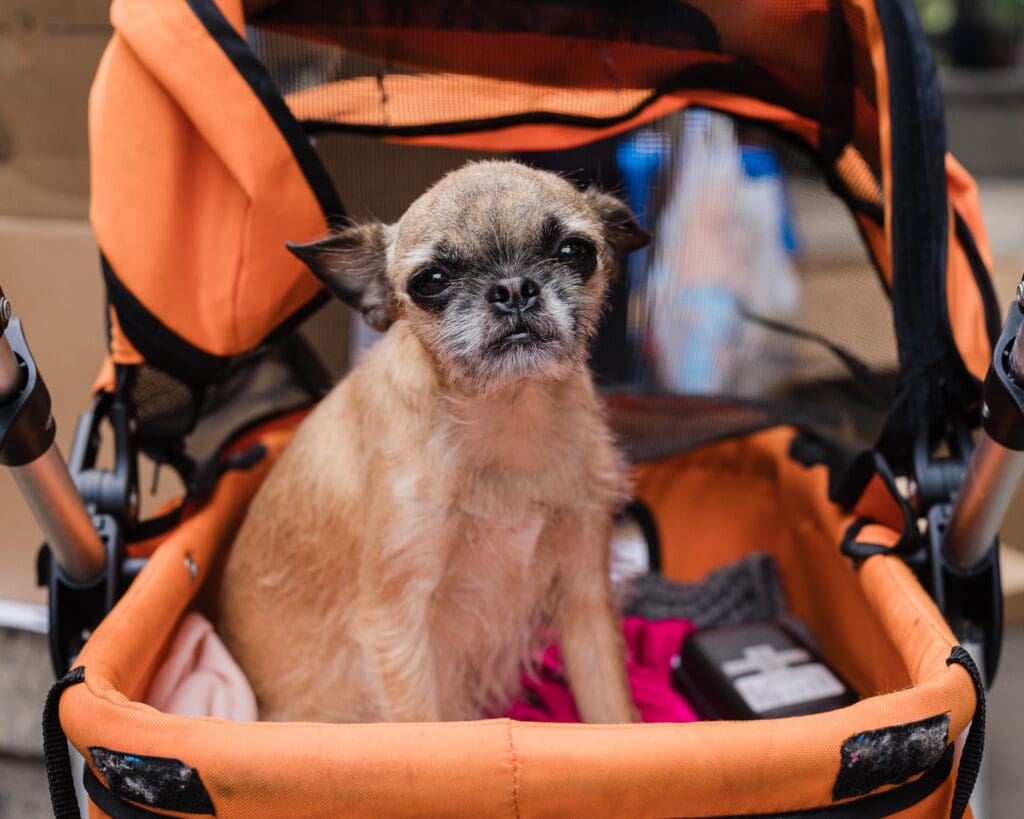
Amy: Thanks so much, Brooklyn, for sharing some of your experiences. You’ve worked on the Downtown Eastside of Vancouver for much of your career. What are some of the common challenges people living in that area experience?
Brooklyn: I feel like the first caveat I would put on answering that is, I have a lot of different types of privilege. I don’t live in the neighborhood. I’ve worked down there for a long time and I have an enormous amount of love and respect for the neighbourhood as a whole and for folks down there. I can say what I observe and I’m happy to answer that question, but it is tough.
I think that one of the things that comes to my mind a lot is so many of us are coming from a really well-intentioned place. It’s often from people who are very intelligent and very compassionate and very empathetic, who have a lot of ideas for things that we’ve read about, we’ve heard about, we believe will help them out.
We need to be as guided as possible by self determination by everyone down there. Because at the end of the day, you know, these are all human beings who are all extremely aware of what they individually want and need. And those needs are definitely not the same for each person either.
Poverty
Brooklyn: When you ask, what are the common challenges? Really intense poverty is a very difficult issue. My preamble there was to stay away from generalizing. I don’t want to say everyone is in abject poverty, but a lot of people are in very intense poverty.
And by that, I mean, they do not have the basic amount of money to survive, sometimes literally or with any level of dignity from month to month to month.
Overdose crisis
Brooklyn: We’ve been living through a severe poisoned drug crisis for seven years now. The numbers every year of people, I can name who have died from it, people I’ve known and cared a great deal for, I can’t conceive of the level of trauma that causes. When this is your neighbourhood and people you see every day, and you see another poster go up that someone you know has died. The level of baseline trauma that is in someone’s life is something I’m very lucky I can’t relate to because it’s not my life experience.
Policing and lack of resources
Brooklyn: I was at an event on the weekend, where a lot of activists were talking about the level of over-policing and under-resourcing. There’s so much money going into the area for monitoring and policing.
And there’s so much of an under resourcing that people are dealing with. When they actually go through a violent incident and they need help, it’s often not there.
Cost of living and veterinary costs
Brooklyn: Cost of living is absolutely an issue. You know, there’s not a lot people are allowed to put towards rent from government assistance checks.
So that’s a real challenge when you’ve got someone who, like we’ve talked about a lot already, who loves their pet with all their heart, and the wellbeing of their pet is at the immediate forefront of their mind, and they want to do the right thing. But they don’t know what to do for a dog who’s stepped on a piece of glass, or for a dog who is somehow starting to vomit, and that’s not normal for their dog, and they want to do the right thing, but they’re not a vet, right? And how are we supposed to get a pet to a vet?
Lack of transportation
Brooklyn: Another big issue in that situation too, is let’s say the person has called us, we’ve had a conversation, we’ve built a relationship, we’ve confirmed some funding for this person to go to the vet, and now they have to physically get to the vet.
That’s tricky too, because we might be able to say, here’s some money to go to the vet, but now they have to either get their hundred pound dog on the bus, and a lot of drivers may well just say, that’s not practical, it’s not safe, I won’t allow it. Or they need to get a taxi, and okay, that’s going to be 35 bucks, and where are you going to find that 35 bucks?
So that can be a real challenge as well.
Systemic barriers
Brooklyn: There are so many inequities and challenges in the neighbourhood that I could talk about all day.
The criminalization of poverty, being treated like you’re a criminal just for being poor in a public place, is really challenging.
Racism is a huge challenge in the neighborhood, it’s a huge challenge in the world.
Gender-based violence is something that people have been doing a lot of work on, there’s a lot of issues with that across the world.
I’ll leave it there for now, but there’s a lot of issues that people have talked about over the years.
Mitigating compassion fatigue

Amy: What is it like to provide support to such a wide range of people experiencing multiple barriers in their lives? How do you keep from taking that all on personally?
Brooklyn: That is a very valuable question. I think for anyone in any form of animal advocacy. Especially because we come to this work because we care a lot in general. We care a lot about animals. We care a lot about human animals, non human animals. And it’s very easy for us, because we’re empathetic people, to overextend ourselves to the point where we can burn out.
I don’t want to say that I have all the answers, even for my own self, but there’s a few things that I try to keep at the forefront of my mind when I approach this work.
Find the good
Brooklyn: One of them is just remaining self reflective throughout our careers, because especially in a career like social services, animal services, you’re going to see really hard things.
It can be very easy to see the challenges, but I would say it’s just as easy if you remember to look for the amazing successes; where you get to see someone has a lot of barriers, they’ve called you, they couldn’t get to the vet, they couldn’t afford the vet, all these different things.
And then you’re able to say, here’s the money that you need to get to the vet for a checkup, some x-rays, blood work, medication, a hospital stay, whatever we might be able to approve. And we were able to get a volunteer to drive you to the vet. And the volunteer was a lovely, empathetic person who stayed with you and emotionally supported you, and your pet got the treatment, and they got better, and now they’ve gone home again.
I mean, seeing the benefits to this work is, they’re everywhere, right? These cases overwhelmingly end happily. There’s so many more wonderful endings than there are really sad and really hard ones.
But with it in mind that this is an industry that’s very heavy in burnout, where a lot of people do see these hard things and you know, you see it once and maybe you can bounce back and you see it twice and maybe you can bounce back and, we all have a different point, but maybe on the 20th time, you just can’t bounce back anymore. And you just find yourself thinking, why should I try? It’s never going to get better. I’m not going to be able to fix the social problems, the systemic problems. So why should I try anymore?
So I try to remind myself of my “why”—and I don’t succeed every day. I don’t want to give off the impression that I’ve solved this or that this is something you can follow these easy steps and you too will have a satisfying career in social or animal services—but I think part of it is remembering why we do this.
Identify consistent ways to help
Brooklyn: And I think another big part of it is having a very clear sense of what I can realistically and reliably provide to folks. And there’s certainly a big piece of that which is beyond my personal ability. Let’s say you work for a huge social service agency where there’s hundreds of staff and dozens of managers, you’re really at the mercy of how good your leadership team is.
You need a very clear image of what your job description is: this is a support that we always provide, this is a support we provide sometimes when possible, and this is support we never provide. When you don’t have that, I think that the probability for burnout is so high because the realities are shifting every day.
Especially in something like the McVitie Fund, I would love to say we had endless money, but we just don’t. We have a set amount of money that we can work with, and knowing that that’s reality, this is what we can provide to people.
I find that’s really helpful for my own mental health; reliability is a big piece of it. Knowing what can I do that someone can rely on? What can I tell everyone who calls that we can do? Something I can promise callers is that we will always listen to you. We will always care about what’s going on for your pet and we will always try our best. I can always promise to try, but I can’t always promise to fund you.
And I think that knowing that really helps me feel like I’m doing something. Even if I can hear you out and not be one of the many burned out people who just says, “no, like we can’t help *click*”. And I’ve also been that person so I understand. I don’t want to say those are bad people. I don’t think that they are bad people. I think people get burned out.
I can be someone who can tell you, “No, I can’t help you, but let’s talk about it for a little bit and let’s explore some resources. Can you give me a bit of a picture of what’s going on? And maybe I can send you some referrals to who might be the best place that might be able to help you.”
Accept and learn from mistakes
Brooklyn: In terms of the sustainability piece, the burnout, emotional, mental health sustainability piece, I think something that’s really important to talk about is just that mistakes are normal.
Mistakes are normal in every part of our lives, but they’re certainly normal in this work. You can learn this work in school, you can train, and you can learn a lot of amazing, applicable skills that way, but it doesn’t come from a manual.
When you’re dealing with a unique human being, every single conversation is different. The thing I usually say works great for almost everyone, and then I could say that same thing to someone else and it’s really upsetting for them. It’s very destabilizing. It doesn’t mean that I’m a bad person, that I said the wrong thing.
Mistakes do not have a relationship to the quality of your character. Mistakes are normal. Things that work a lot of the time don’t work all of the time. Someone can fall into the thought process of I made a mistake, so I’m a bad person. Or the flip side, I’m not a bad person, so I couldn’t have made a mistake.
All of us have so much that we’ve learned, and also so much learning that we have left to do. I find that when we approach working with people whose lives we may not understand, it’s important to allow ourselves to accept when we need to learn something new. And if we’re wrong, it’s okay to be wrong, and it’s okay to apologize, and it’s okay to learn a new thing, and it’s okay to refine our approaches when we talk to each other and to people.
Redefine self care
Brooklyn: My last point that I would say about burnout culture is about substantial real self care. I’m uncommonly lucky to work with an organization that talks about the impacts of trauma on those who call us, and the ways that our relationship can flow where we can cause trauma to the person we’re speaking with on the phone, and also the way that trauma can be caused to us by hearing very difficult stories and disclosures.
A lot of times we see a lot of what I call like Instagram self care, you know, bubble baths and exercise classes, things like that. And it can be those things. I don’t think that those are bad examples of self care, but I don’t think that that’s the complete picture.
In work like this, in any job that is psychologically demanding and psychologically taxing, I think it’s so critical to have what I would describe as “substantive” or what other people describe as “real” self care.
That includes trauma therapy. Someone to really talk to who can help us understand, there’s a science to how this process is in the brain. A traumatic disclosure can physically, physiologically change your brain. It can change your reactions. It can change a lot of things about how you feel now. It can change how you feel long term. So access to trauma therapy.
Being able to take paid time off when we experience psychological impacts from our work.
Having people to talk about these issues when they come up.
Connecting with nature or land based healing practices can be incredibly valuable for many people.
Cuddling our pets I think of as a huge part of my own self care. Whenever I have certain types of difficult talks with people, I’ll just think, I’m so glad my little one is here right now. Even though I know that they’re not immortal, I’m not going to have them forever, I’m so lucky that this is a moment where both my cats are in very good health. They’re here, they’re happy.
Safe housing I think is a huge part, medical care, anything that is a necessity to be healthy, safe, and secure in our lives, those are all things I think of as substantive self care.
Free training on mitigating compassion fatigue & burnout
Chantelle: That’s a really good overview of trauma informed care, and thank you for delving into your own practices and your work.
A lot of what you talked about there is what we refer to as trauma-informed care.
If you are interested in learning more about incorporating trauma-informed care into your work and reducing the effects of compassion fatigue and burnout as an animal advocate or person working in the animal services sector, the Vancouver Humane Society offers free training courses..
Concerns about animals living on the street

Amy: We get a lot of people contacting Vancouver Humane Society concerned about animals living outdoors on the street, or animals that are being cared for by people who are drug users. How would you respond to people who have concerns about animals that are living outdoors with their guardians?
Brooklyn: That’s a very important question that does absolutely come up a lot.
There are different mindsets from people who would all agree with each other that we care a lot about non-human animals, we care a lot about pets and their safety, security, happiness, wellbeing, all of those elements.
When we discuss topics with each other, I always try to start from a perspective of where are we completely in alignment? And I think if we can start from the perspective of, this person is sounding to me like they’re communicating that they really care about the wellbeing of the pets that they’re seeing around the city, I’m a hundred percent on board with that.
That is what I hear from guardians as well. That’s my experience.
I would say the majority of guardians we speak with are housed in a literal sense. They have an address. Often it’s those single room hotels, some of which are much better than others, some of which are much worse than others. A lot of them are pet friendly, and so a lot of people do have cats, dogs, rats, rabbits. There are a lot of pets in the SROs, the single room hotels.
For the buildings that are on the worse end of the spectrum, from a safety and dignity perspective, I’ll see a lot of people who, even though they actually do have housing in a literal sense, they’ll spend a lot of time outside.
Even sometimes when it’s too hot because very few, if any, of them are air conditioned. So when there’s a heat wave, people will jump into their tents in the park or on the street or just be outside a lot of the time.
And then we do have a lot of people who simply are not housed at this time.
A lot of it is having relationships across the sector and trying to be as intertwined as possible between animal services and human services. We have a lot of conversations with support workers from housing organizations, from public health.
I get actually a surprising amount of calls from social workers and nurses who refer clients to us because they work with folks who are unhoused and they immediately understand, from a public health perspective, how critical it is to their human client’s wellbeing, to ensure the wellbeing of their pet. It’s really heartening whenever I have those conversations where someone is starting from that perspective.
But it is tricky when someone just disagrees or doesn’t think that someone who is profoundly in the grip of poverty should be allowed to have a pet. I find it challenging emotionally because this isn’t a concept to me.
These are people. I obviously for confidentiality will not name them, but I mean, these are people who have names. I know these people and I can tell you that they care profoundly about their pets and these are the same people who buy that $45 bag of cat food first with their last $80 so that their cat has food for the rest of the month at all costs.
These are people who will do incredible things. I’ve had people call and say, I’m going to sell the motorbike that is the only way they get around so that I can get this pet the surgery that they need. These are normal conversations that I have with people.
So I would just say, the level of love, but also the level of practical safety and companionship that this pet is receiving from this guardian is absolutely on the same par as what I’m providing to my pets.
I’ve read studies where people have noted that in a lot of cases, when someone is sheltering outside and doesn’t have housing at all, they’re with their pet almost around the clock. That can be really critical for some pets who have separation anxiety. I think a lot of our pets would love to have that much companionship and that much emotional support.
Pets and young people

Amy: Paws for Hope, another organization working in the Lower Mainland to help keep pets and guardians together, released a report called Connections and Companionship. Chantelle, what can we learn from that report?
Chantelle: The report highlights how pets can offer emotional support to young people experiencing hardship in their life by providing stability and comfort. It also highlights how pets can facilitate bonding between youth and foster parents and be a source of security and comfort for youth in government care.
I found it interesting that young people experiencing challenges were more likely to have a pet; like if they were experiencing poverty, had run away from home in the past year, experienced discrimination, had a physical disability or challenges with their mental health or substance use.
The report doesn’t get into causation, so it’s not clear if this is an example of the phenomenon I mentioned earlier, where people who experience challenges want to help animals who are in need, or if these young people adopted pets to help cope with the challenges they were facing, or a combination of the two.
Even though most young people with a companion animal in their lives said that they experienced benefits to their well-being, young people who weren’t well-off financially were more likely to miss out on accessing needed vet care – 38% vs. 5%. Worrying about the cost of pet care also added an extra stressor that led to participants reporting poorer mental health, and having a pet presented problems with youth accessing housing and other services for themselves.
Collaboration with other services

Amy: Brooklyn, who are some of the other agencies that are providing support to people? In what ways do you collaborate?
Brooklyn: Collaboration is absolutely key, especially since like I mentioned before, we don’t have the limitless budget I think all of us would fantasize about a nonprofit having. So with the realities of what we are able to do in a year, it’s essential.
Let’s say we’ve got a $2,000 surgery to save a pet’s life. If we can contribute $500, I look at it as a puzzle. How do we find the other pieces that we need to make this puzzle come together? In that sense, we’re really reliant on an ecosystem in my mind of organizations who have a very similar perspective and a similar value system and provide different types of supports to pets in these kinds of emergencies.
So you mentioned Paws for Hope. That’s absolutely an agency that we work with a great deal.
The BC SPCA is a group that we work with a lot as well, especially their Vancouver Animal Hospital, which does incredible work. That can be really, really critical, you know, for additional funding for a hospital that might be able to offer a discount on the procedure, making a $2,000 procedure less of a mountain to climb.
We work with a lot of shelters and a lot of nonprofit housing providers. A huge amount of our referrals come that way and our work flows in both directions. When they’ve got a pet who’s been attacked and is physically injured, or a guardian who’s really stressed out about a pet who’s showing signs of a very serious illness, we can help in that situation.
And they also help us out a lot when I’ve got someone calling me and saying, you know, I’ve got a veterinary problem, but I don’t have anywhere to sleep tonight. The weather is starting to get bad and it’s raining really hard. And I don’t want to have my pet recovering from something in a place that’s not safe for them to recover. That’s where we’ll go to the shelter list and I’ll be calling shelters or I’ll send them a list of resources to contact and try to find either a housing advocate or just different shelters that are pet friendly and might take them in.
Not every shelter is pet friendly. In Vancouver, we have a lot of social services, but it doesn’t come from the greatest reasons—it’s because we have a lot of poverty. But when you get into some of the smaller towns and cities across B.C., they may have one shelter within a few hundred kilometers. So if that shelter is not pet friendly, you’ve got people making decisions, almost all of which end in, I will shelter outside with my pet, rather than shelter inside and leave my pet to the elements.
Transition houses is another one. We work with a number of transition houses who are helping women fleeing domestic violence, gender based violence.
We work with a lot of pet food banks across the province. Those are amazing resources. At the end of the day, I think a lot of this boils down to, we are doing the best we can as individuals and as small organizations and sometimes as large organizations to try to pull together survival for a lot of pets.
Sometimes my job doesn’t entail providing survival to humans, but sometimes it involves working with others who do. There are a lot of nurses that we work with. There are a lot of housing providers who are providing survival resources to people and their pets
It is a challenge for all of us to do this as separate organizations, even as ones that work together in an ecosystem. This is not government funded, like human medical care. This isn’t a resource where there’s a clear series of steps for what you do when you go through a crisis and money is not available. If money is not available, this is a much bigger, sometimes insurmountable, problem in a way that it isn’t with human medical care.
Amy: Thanks for mentioning the government funding piece. I think this is crucial for understanding why people face the challenges they are facing. With limited government resources focused on providing basic needs for structurally vulnerable people; pets are often left out of the equation.
There is one government program from the Ministry of Social Development and Poverty Reduction that is providing some hope, though. It provides people the deposit needed to for accessing housing with a pet. This deposit is so crucial for accessing housing.
We’re hopeful that more advocacy will also lead to agencies that provide human services, also having a budget line for pets. Organizations like ATIRA Women’s Resource Society now have dedicated staff to assist with pets.
Brooklyn, in your mind, what would an ideal model for support for pets and their guardians that are struggling financially look like?
Brooklyn: That’s a really good question. It is one that’s hard to give a specific answer to.
Different organizations do provide these kinds of resources and supports in different methods. I definitely don’t feel like there’s one method that is the best method.
The way that we’ve settled on is to provide one-time crisis care funding for pets in an immediate life threatening emergency. There are reasons why we feel strongly that that’s an excellent method. And there are things that are not possible in that method, such as continuing care.
There are other organizations that have a different approach where they’ll work with the same pet throughout the duration of their whole lifetime providing care. There are obviously huge benefits to that method; and there are challenges when you can only realistically afford to take on so many pets and then a lot of pets are being turned away.
I think it’s really great that different organizations are providing care in different ways. Hopefully together, we can come together like a puzzle and make this all come together for each pet as much as possible.
On the whole though, I think it’s really important that any model for supporting pets and guardians in crisis be trauma informed. It’s really important to treat everyone with the dignity that they deserve, regardless of the specifics of their circumstances.
To be trauma informed, we need to be non-stigmatizing and always be reflecting on our programming; for ways for it to be easier to access and more inclusive. That’s a huge ongoing priority for our programming. At the end of the day, it is really challenging for a bunch of different organizations to be working on this separately, instead of in a cohesive, government funded way.
How you can help

Chantelle: We like to end the episode by sharing something that our listeners can do to make an impact with regard to the topic of the month, so are there any actions you can share for people today to help people access resources for their pets?
Brooklyn: We can do so much as a program, but at the end of the day, the struggle is tangible, budgetary realities. It’s just what we do and don’t have access to. There are certain parameters we have to put on our programs of how much we can fund the same pet in a year and in their lifetime so that we can keep going so that we don’t just run out of funding and turn away every single other pet.
The real challenge is donations. We’re very, very lucky to have a lot of monthly donors and a lot of people who are very generous and will do birthday fundraisers and just the most incredible things to help pull these funds together for pets in crisis.
It absolutely all makes a difference. And that money, when it’s earmarked for McVitie, goes directly into medical care for these pets.
There are pets who will not survive without a certain surgery or a hospitalization or medication today. And the relationship between the donor and the recipient is such a close one. Folks will donate and then a pet is able to get emergency life saving care. And it makes such a difference. So I would just say the more funds we have, the more we can do with them.
Chantelle: Also, just to add on, doing advocacy to get these programs funded is also really important.
Like you mentioned, veterinary care is not subsidized like human medical care is. Animal’s lives have inherent value. They also have these major benefits for their guardians, like mental health benefits, physical health benefits, emotional benefits. And advocating for those resources to be funded can go a really long way in making those programs accessible to people.
Next episode

Please join us next month as we discuss how to handle compassion fatigue and burnout as an animal advocate.

